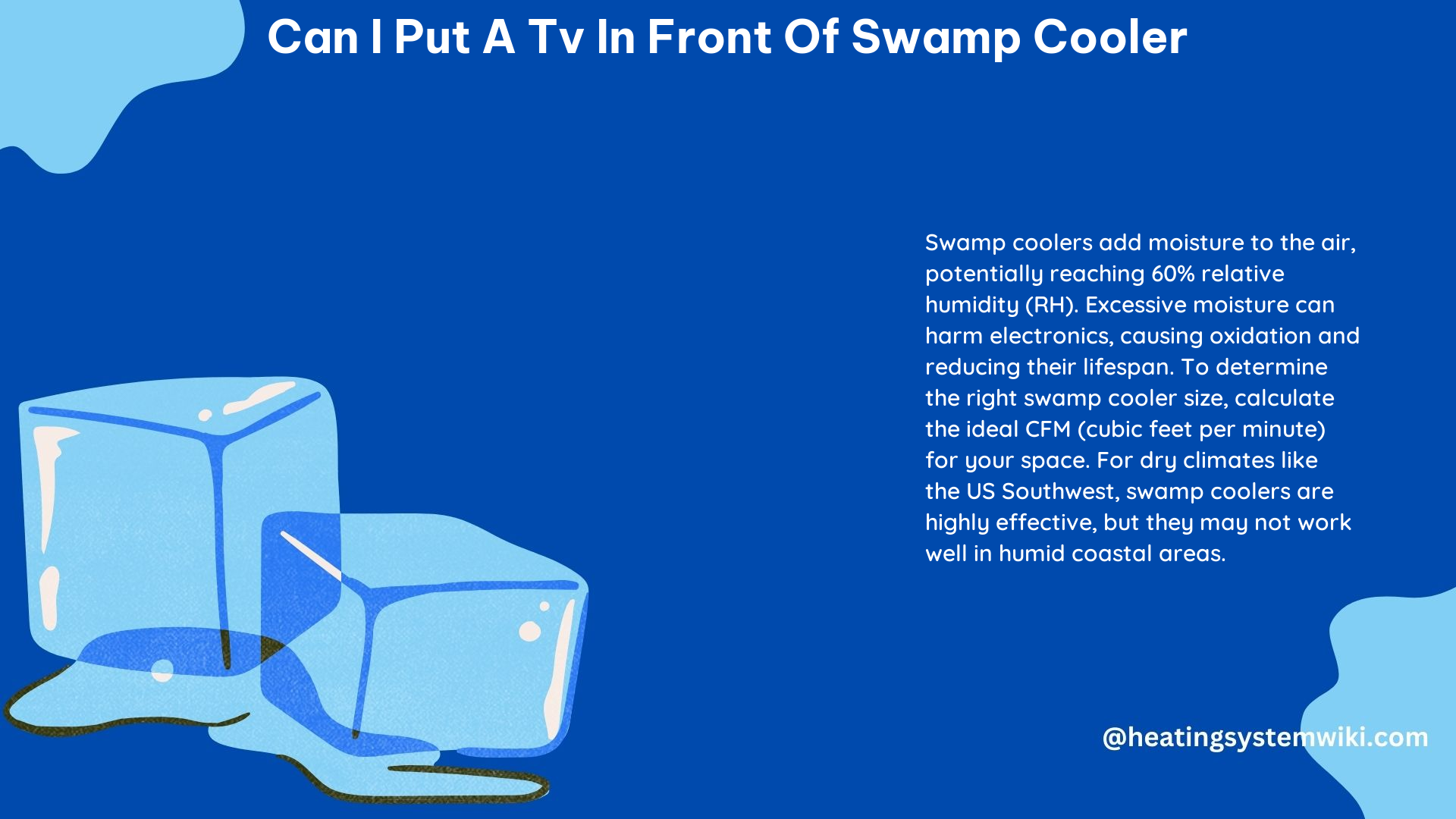Swamp coolers, also known as evaporative coolers, are a popular and energy-efficient way to cool indoor spaces, especially in dry climates. However, the question of whether it’s safe to place a TV in front of a swamp cooler is a common concern for many homeowners. In this comprehensive guide, we’ll explore the technical details, potential risks, and best practices to help you make an informed decision.
Understanding Swamp Coolers and Their Impact on Humidity
Swamp coolers work by drawing in hot, dry air and passing it through a wet pad or filter. As the air passes through the wet medium, the water evaporates, cooling the air and increasing its humidity. This process can significantly increase the moisture content in the surrounding air, with humidity levels often ranging from 40% to 60% in a well-functioning swamp cooler.
The increased humidity levels can pose a potential risk to electronic devices, such as TVs, as they can lead to condensation, corrosion, and other moisture-related issues. According to the Sylvane FAQ on evaporative swamp coolers, the ideal humidity range for most electronics is between 30% to 50%. Exceeding this range can potentially cause damage over time.
Factors to Consider When Placing a TV Near a Swamp Cooler

When deciding whether to place a TV in front of a swamp cooler, several key factors must be taken into account:
-
Proximity to the Swamp Cooler: The closer the TV is to the swamp cooler, the more it will be exposed to the increased humidity levels. As a general guideline, it’s recommended to maintain a minimum distance of 3 to 5 feet between the TV and the swamp cooler’s air outlet.
-
Airflow and Ventilation: Ensure that the swamp cooler’s airflow is not directly blowing onto the TV. This can help mitigate the impact of the increased humidity. Additionally, make sure the room has adequate ventilation to allow for proper air circulation and moisture dissipation.
-
Humidity Levels: Monitor the humidity levels in the room where the TV and swamp cooler are located. Invest in a hygrometer to measure the relative humidity, and aim to keep it within the recommended range of 30% to 50%. If the humidity levels consistently exceed 50%, it may be advisable to reconsider the placement of the TV.
-
Climate and Seasonal Variations: Swamp coolers are most effective in dry climates, where the air has a higher capacity to hold moisture. In more humid regions, swamp coolers may not work as efficiently and could potentially add too much moisture to the air, further increasing the risk to the TV.
-
TV Specifications and Tolerances: Different TV models may have varying tolerances for humidity levels. Consult the manufacturer’s guidelines or technical specifications to understand the recommended humidity range for your specific TV model.
Mitigating Risks and Protecting Your TV
If you decide to place a TV in front of a swamp cooler, there are several steps you can take to mitigate the risks and protect your investment:
-
Maintain Proper Airflow and Ventilation: Ensure that the swamp cooler’s airflow is not directly blowing onto the TV. Position the TV in a way that allows for adequate air circulation around it.
-
Monitor Humidity Levels: Regularly check the humidity levels in the room using a hygrometer. If the humidity exceeds 50%, consider adjusting the swamp cooler’s settings, increasing ventilation, or relocating the TV to a less humid area.
-
Use a Dehumidifier: If the humidity levels remain consistently high, consider using a dehumidifier in the room to help maintain the optimal humidity range for the TV.
-
Invest in a Humidity-Resistant TV: Some TV models are designed to be more resistant to high humidity levels. Research and consider purchasing a TV that is specifically rated for use in high-humidity environments.
-
Regularly Clean and Maintain the Swamp Cooler: Proper maintenance of the swamp cooler, such as cleaning the water reservoir and replacing the cooling pads, can help ensure it operates efficiently and doesn’t contribute to excessive humidity.
-
Consider Alternative Cooling Solutions: In some cases, it may be more practical to explore alternative cooling solutions, such as a traditional air conditioning system, which can provide more precise temperature and humidity control.
Conclusion
Placing a TV in front of a swamp cooler is a complex decision that requires careful consideration of various factors, including proximity, airflow, humidity levels, climate, and TV specifications. By understanding the potential risks and taking the necessary precautions, you can find a solution that allows you to enjoy the benefits of both your TV and your swamp cooler.
Remember, the key to success is maintaining a delicate balance between cooling and humidity control. With the right approach, you can create a comfortable and electronics-friendly environment in your home.
Reference:
1. HVAC-Talk forum discussion on using a portable swamp cooler in a room with central air conditioning: https://hvac-talk.com/vbb/threads/2254765-Use-of-Portable-Swamp-Cooler-in-a-Room-in-Conjunction-w-Central-Air-Con?p=26488307
2. Reddit discussion on whether a swamp cooler will mess with audio equipment: https://www.reddit.com/r/Beatmatch/comments/cnhta1/will_a_swamp_cooler_mess_with_my_gear/
3. Sylvane FAQ on evaporative swamp coolers: https://www.sylvane.com/indoor-swamp-cooler-faq.html
